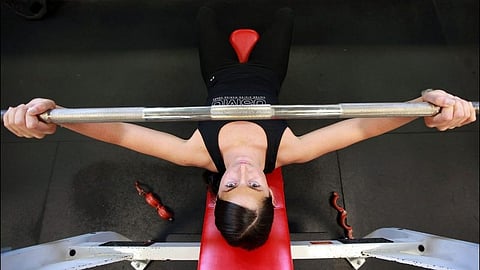
- Home
- Live Blog
- Breaking News
- Top Headlines
- Cities
- NE News
- Sentinel Media
- Sports
- Education
- Jobs

Building muscle strength may be a way to lower the chance of type 2 diabetes, a recent study suggests. The study, which concerned over 4,500 adults, found that moderate muscle mass reduced the chance of type 2 diabetes by 32%. The advantages were freelance of metabolism fitness, and better levels of muscle strength didn't offer further protection.
According to the researchers, the results are encouraging as a result of even tiny amounts of resistance exercise is also useful in preventing type 2 diabetes by improving muscle strength. However, it's difficult to recommend an optimum level as there are not any standardized measurements for muscle strength.
“Naturally, individuals can wish to grasp however typically to raise weights or what quantity muscle mass they have, however, it’s not that easy,” same DC Lee, lead author of the study published in the Journal of Mayo Clinic Proceedings.
“As researchers, we've many ways in which to live muscle strength, like grip strength or bench press. More work is required to work out the correct dose of resistance exercise, which can vary for various health outcomes and populations,” Lee explained.
Study participants completed chest and leg presses to measure muscle strength. Those measurements were adjusted for age, gender and body weight as potential confounders, which is an example of why researchers say it's difficult to supply general recommendations.
While many factors contribute to muscle strength, according to Angelique Brellenthin, one in all the lead researchers, resistance exercise is vital. Information on resistance exercise wasn't obtainable for many participants, with the exception of a small group, that showed a moderate correlation between muscle strength and frequency or days per week of resistance exercise.
Other research has found resistance training improves glucose levels and reduces waist circumference - an indicator of excess fat associated with type 2 diabetes and other health issues, Brellenthin said.
“You’re not necessarily going to see the results of resistance training on your restroom scale, however, there are many health advantages. It should facilitate lower your risk for type 2 diabetes albeit you are doing not lose weight, and that we recognize maintaining muscle mass helps us stay functional and independent throughout life,” said Brellenthin.
Based on self-reports, Brellenthin says solely 20% of USA citizens meet the guidelines (two days every week of muscle-strengthening activities) for resistance exercise. Whereas information for the study doesn't seem to be decent to supply suggestions for weight training, she says some is healthier than none. Getting started does not require a gym membership or expensive equipment. In fact, you can start at home by doing body-weight exercises.
“You can get a good resistance workout with squats, planks or lunges. Then, as you build strength, you can consider adding free weights or weight machines,” Brellenthin explained.